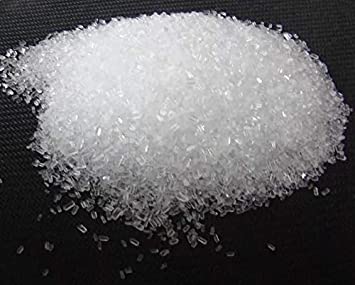+91 7600825695 Info@shreerangtrading.com


Magnesium sulphate
MgSO4 or MgO4S
Magnesium sulphate is a chemical compound, a salt with the formula MgSO 4, consisting of magnesium cations Mg2+ (20.19% by mass) and sulfate anions SO2- 4. It is a white crystalline solid, soluble in water but not in ethanol. Magnesium sulfate is usually encountered in the form of a hydrate MgSO 4•nH 2O, for various values of n between 1 and 11. The most common is the heptahydrate MgSO 4•7H 2O, known as Epsom salt, which is a household chemical with many traditional uses, including bath salts. The main use of magnesium sulfate is in agriculture, to correct soils deficient in magnesium (an essential plant nutrient because of the role of magnesium in chlorophyll and photosynthesis). The monohydrate is favored for this use; by the mid 1970s, its production was 2.3 million tons per year.[2] The anhydrous form and several hydrates occur in nature as minerals, and the salt is a significant component of the water from some springs.
As Mg2+ and SO2-4 ions are respectively the second cation and the second anion present in seawater after Na+ and Cl- , magnesium sulfates are common minerals in geological environments. Their occurrence is mostly connected with supergene processes. Some of them are also important constituents of evaporitic potassium-magnesium (K-Mg) salts deposits. Bright spots observed by the Dawn Spacecraft in Occator Crater on the dwarf planet Ceres are most consistent with reflected light from magnesium sulfate hexahydrate.[9] Almost all known mineralogical forms of MgSO4 are hydrates. Epsomite is the natural analogue of "Epsom salt". Meridianiite, MgSO4•11H2O, has been observed on the surface of frozen lakes and is thought to also occur on Mars. Hexahydrite is the next lower (6) hydrate. Three next lower hydrates—pentahydrite, starkeyite, and especially sanderite—are rare. Kieserite is a monohydrate and is common among evaporitic deposits. Anhydrous magnesium sulfate was reported from some burning coal dumps. Magnesium sulfate relaxation is the primary mechanism that causes the absorption of sound in seawater at frequencies above 10 kHz[10] (acoustic energy is converted to thermal energy). Lower frequencies are less absorbed by the salt, so that low frequency sound travels farther in the ocean. Boric acid and magnesium carbonate also contribute to absorption.